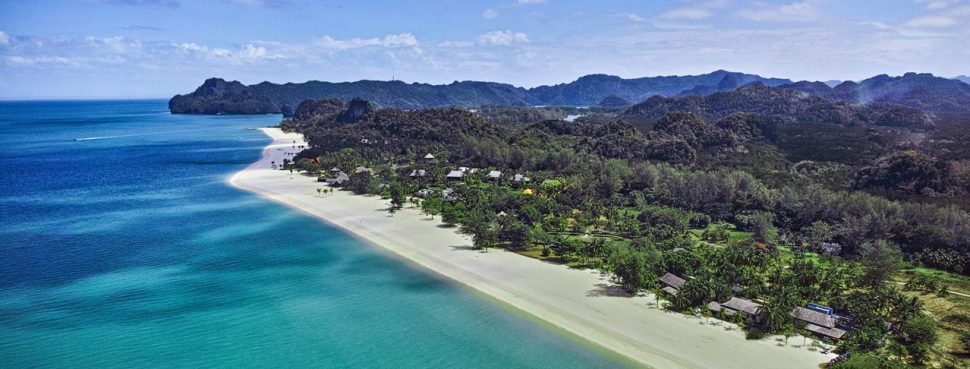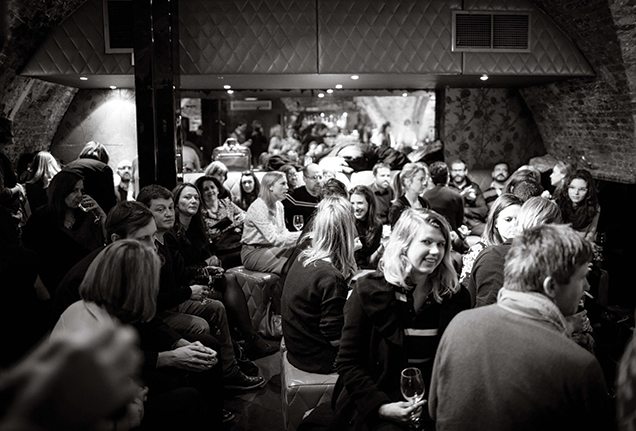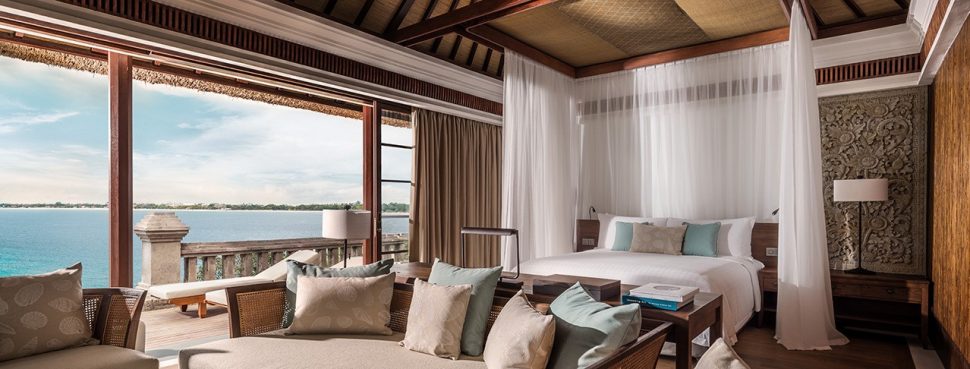Close your eyes and picture a wildlife safari. What do you see? My guess is that the images dancing through your mind involve Africa’s Big Five – lions, leopards, elephants, rhinos and buffaloes – and not the region’s lesser-known Little Five, a contingent of smaller-statured wildlife that includes rhinoceros beetles and elephant shrews.
I had expectations of grandeur myself as I travelled just off the northwest coast of Malaysia and prepared to embark on the Mangrove and Eagles Safari, an Extraordinary Experience on offer at Four Seasons Resort Langkawi. But I soon discovered, amid mangroves and dense geoforests, that observing wildlife on a smaller scale can be just as exhilarating as catching sight of a majestic lion stalking across the Serengeti.

Langkawi’s labyrinth of mangroves house sea caves, millions-year-old rock formations and myriad wildlife.
The more modest specimens in question here include fish, birds, monkeys and those known by local guides as Langkawi’s Flying Five: airborne lemurs, lizards, frogs, tree snakes and squirrels. They’re just as alluring and elusive as megafauna, and certainly as impressive if you have the chance to see them up close.
Langkawi is the largest in an archipelago of 99 islands, most of them technically sea stacks born some 550 million years ago of tectonic plate movement. Upon these porous limestone rocks today, thick geoforests make for stunning scenery and, more importantly, host a unique ecosystem and range of wildlife. Brushing the Andaman Sea and nestled into the forest on the northern shore of Langkawi is the Resort, the perfect access point to Langkawi’s Kilim Karst Geoforest Park (part of the UNESCO-protected Langkawi Geopark) and the place where our enlightening wildlife adventure begins.
Tap or click a photo to launch slideshow
Off the northwest coast of Malaysia, Four Seasons Resort Langkawi is a tropical haven of lush rainforests, exotic wildlife and relaxing beaches.
Rare and tropical land and sea animals abound on Malaysia’s largest island.
Explore the verdant Kilim Karst Geoforest Park on the Resort’s Mangrove and Eagles Safari experience.
550-million-year-old limestone geological formations and caves epitomise the Geopark’s natural history.
The indigenous Brahminy Kite, whose Malay name (lang kawi) gives the island its name, often nests in mangroves.
As part of the Mangrove and Eagles Safari, an expert naturalist will guide you by boat through the Geopark’s dynamic ecosystem.
We meet our guide, Farouk, in the Resort’s Geopark Discovery Centre. After a brief introduction to the park and the Resort’s efforts to aid conservation, we board our boat, a motorised Malay pinas, straight off the beach. Bouncing along the shoreline, we get a close-up view of one of the sea stacks, which looms over us as we glide by. It’s a curious sight: sheer walls, thick with foliage, sprouting from the sea.
Up ahead the mangroves come into view, and we slow to a crawl to prevent our wake from damaging the delicate shorelines. Still on open water, we edge up to the fringes of the forest, and on the muddy waterfront Farouk points out fiddler crabs, mudskippers and, in the water, needlefish. As we crane over the side of the boat to get photos, he explains how important the mangroves are to the archipelago; more than 60 percent of the area’s marine life depends on this habitat.

Experience the wonder of South Asia’s first UNESCO Geopark at the Resort’s Geopark Discovery Centre, featuring exhibition boards, interactive presentations and authentic displays.
Four Seasons Resort Langkawi
It’s not long before a group of macaques, curious about their new neighbours and likely on the hunt for a free feed, emerge from the branches. Farouk tells us the monkeys are, as one might expect, intelligent creatures unfazed by human contact, even known to board tour boats at times. Farouk is a delightful, animated guide, filling us in on animal behaviour and anecdotes from his excursions. Many of the monkeys, he says, recognise him and adapt their behaviour accordingly, sometimes challenging him for alpha male status.

Curious macaques are among the many species of local wildlife you’ll spot during the safari.
Now fully surrounded by mangroves, our boat rounds a bend and enters a broad stretch of brackish water over which white-bellied sea eagles and Brahminy Kites, whose name in Malay gives Langkawi its name, swoop and dive to catch titbits from a feeder boat.
Farouk takes us farther up the river, where it narrows to such an extent that mangroves brush the sides of the boat. We’re in the thick of action here, the sun only dappling the water as we glide through. Someone spots a snake on a branch, but we’re assured it’s at a safe distance; later on a lizard, 2 feet long from nose to tail, breaks from the bank and swims out in front of our bow. We’re thoroughly immersed in this fascinating tropical environment.
Farouk has one more treat up his sleeve for us before we make our way home: We pass through a ravine and into a tunnel-like cave. Not until he switches his torch on and points it upwards do we see that the ceiling is crowded with sleeping bats.
As we skip over the sea back to the Resort, I reflect on the creatures we’ve seen in this unique environment and those that have eluded us, including the Flying Five—that’s the chance you take when you look for animals in their natural habitat. I’m sure of one thing: I’ll have to return.
















